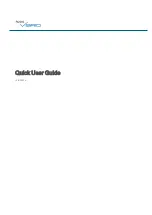
52
GB/IE
Welded joints
There are two-basic types of joints in
welding: Butt welds (outer edge)
and angle welding (inner edge and
overlapping).
Butt welds
With butt welds of up to 2 mm, the weld
edges are completely brought together.
For greater thicknesses, please proceed
as per the following table (Figure X):
X
S =
1–3 mm
3–4 mm
4–6 mm
d =
surface
0.5–1.5 mm 1.5–2.5 mm 2–3 mm
d =
vertical
1–1.5 mm
1.5–2.5 mm 2–3 mm
d =
front surface
1–2 mm
2–3 mm
3–4 mm
Flat butt welds
Welds should be made without inter-
ruption and wit
h a sufficient penetration
depth. Therefore, it is extremely impor-
tant to be well prepared. The factors
that influence the quality of the weld
result are: the amperage, the distance
between weld edges, the inclination of
the torch and the corresponding diame-
ter of the welding wire. The steeper you
hold the torch against the workpiece,
the higher the penetration depth and
vice versa. To forestall or reduce defor-
mations that can happen during the
material hardening process, it is good to
fix the workpiece with a device. Avoid
stiffening the welded structure to prevent
cracks in the weld. These problems
can be avoided if there is a possibility
of turning the workpiece so that the
weld can be carried out in two passes
running in opposite directions.
Welds on the outer edge
The preparation for this is very simple
(Figures Y, Z).
Y
Z
However, it is no longer expedient for
thicker materials. In this case, it is better
to prepare a joint as shown below, in
which the edge of the plate is angled
(Figure AB).
AB
Using the device
















































